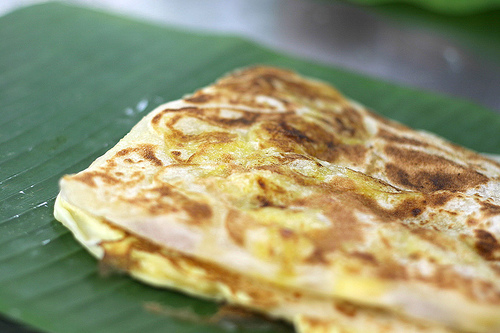Facts About Roti canai
Roti canai, also known as roti chenai, roti cane, or roti prata, is a delectable flatbread dish with Indian origins that has become a beloved staple throughout Southeast Asia. It’s widely savored in Malaysia, Brunei, Indonesia, and Singapore. Traditionally, it's served with dal or various types of curry, but it can also be stuffed with sweet or savory fillings such as meat, egg, or cheese. In Malaysia, roti canai is a breakfast essential and a popular snack, thanks to the Indian Muslim community known as "Mamaks" who introduced it.
The allure of roti canai lies in its dough, which is prepared from a straightforward mix of fat, flour, and water, sometimes sweetened with condensed milk. The dough undergoes a meticulous process of kneading, flattening, oiling, folding, and proofing to create those irresistible layers. It's then stretched thin—often by tossing it in the air—before being shaped into a knot or spiral and cooked to perfection. There are numerous regional variations, such as murtabak, roti telur, roti boom, and roti tissue, each offering unique fillings and preparations.
In Malaysia, roti canai is typically accompanied by dal curry but also pairs splendidly with chicken, beef, mutton, or fish curry. There are plenty of variations to explore, including roti cheese, roti sardin, and roti pisang. In Indonesia, it is known as roti cane and is often enjoyed with mutton curry. In Singapore, the dish is referred to as roti prata and features an array of curries, cheese, onions, bananas, and other delightful toppings. In Thailand, street vendors sell roti with sweet fillings such as mango, banana, and condensed milk.
The origins of the name "roti canai" remain somewhat enigmatic, with several theories in circulation. Some suggest it may trace back to Chennai or Northern Indian cuisine, while the Oxford English Dictionary proposes it derives from a Malay word meaning "to roll dough thinly." Regardless of its etymology, the preparation and cultural significance of roti canai vary across the region, highlighting the rich and diverse culinary traditions of Southeast Asia.

 Thailand
Thailand